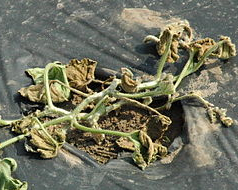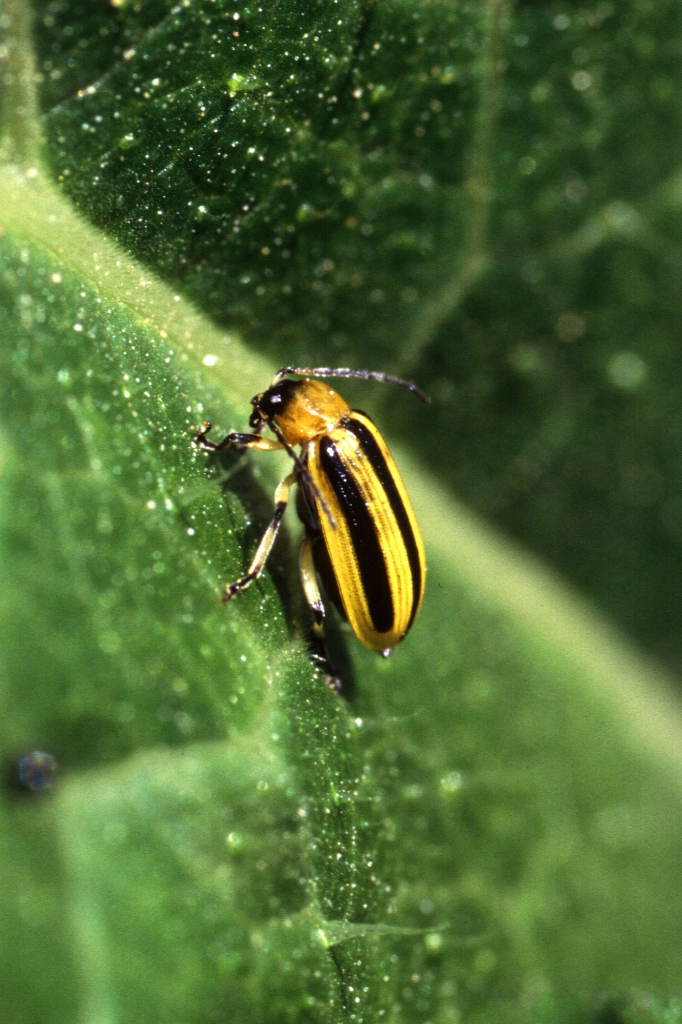
Caused by the bacterium, Erwinia tracheiphila, bacterial wilt affects cucumber and cantaloupe severely, squash and pumpkin less so, and watermelon rarely. The first symptom is the wilting of leaves during periods of high water stress, followed by the wilting of stems that spreads to the entire vine. The plant may appear to recover at night but eventually dies as the disease spreads. Partially resistant plants may be dwarfed, and show excessive branching and flowering. To determine if the symptoms are those of bacterial wilt, cut off a wilted vine near the base of the the pant. Next, cut the wilted piece into two sections and slowly pull them apart. If sticky threads form between the two vine sections or between the knife and the vine stem, bacterial wilt is causing the symptoms. The causative bacterium overwinters in the guts of the adult striped cucumber beetle (Acalymma vittatum) and the spotted cucumber beetle (Diabrotica undecimpunctata) and enters the plant through feeding wounds after passing through the beetles as the they feed on the cucumber plant. There is no cure for bacterial wilt and control of the disease is focused on controlling the cucumber beetle population. Photo Credit Wikipedia

Control
- Three year crop rotation with plants from other plant families.
- Plant cucumber far from corn because the larvae of spotted cucumber beetles feed on corn
- Grow cucumber plants under netting to prevent cucumber beetles from feeding on them.
- Eliminate all infected plant material as soon as symptoms appear.
- Dust plants with insecticide such as Sevin in spring before the cucumber beetles lay eggs.
Photo Credit Scott Bauer Wikipedia